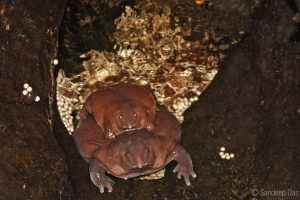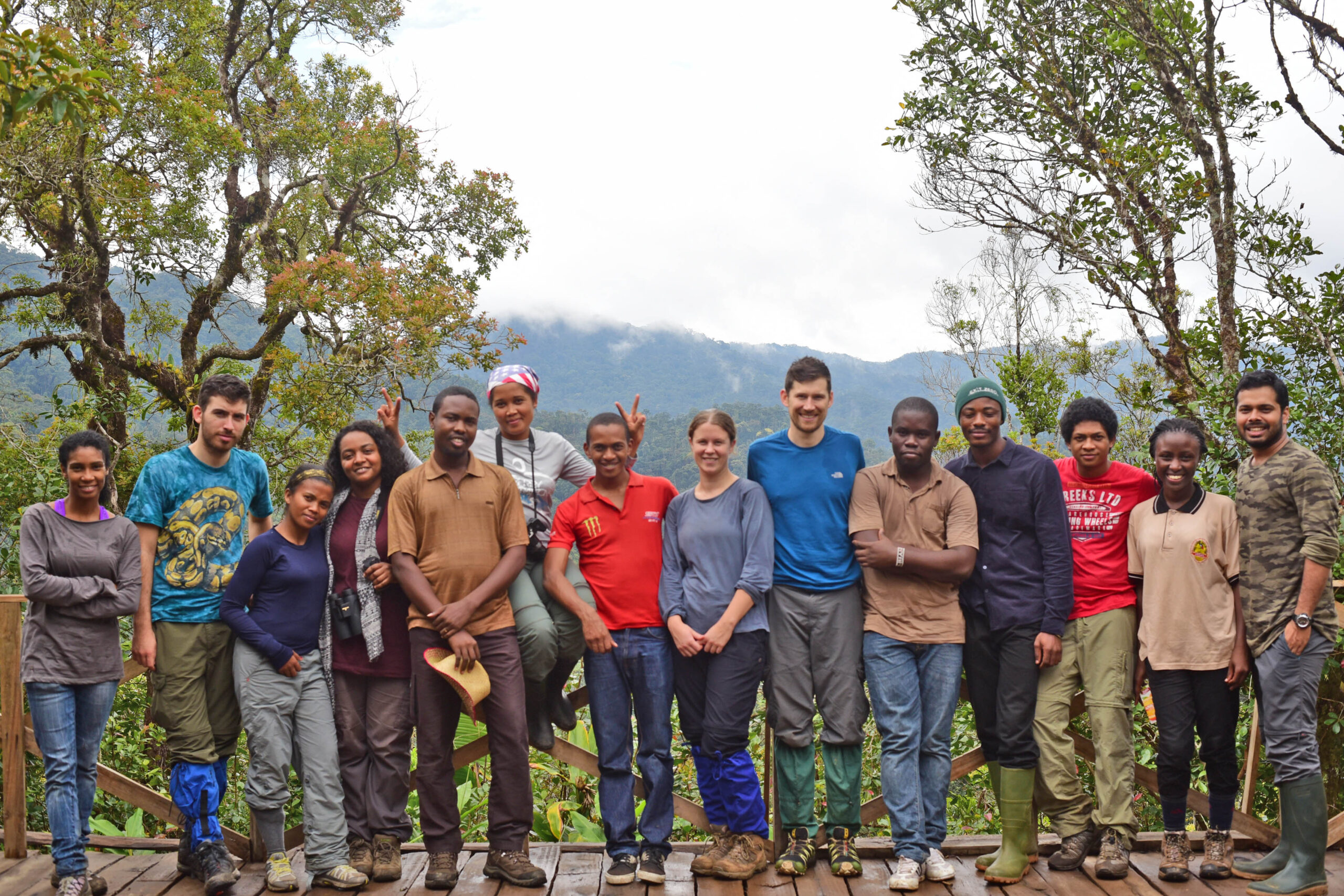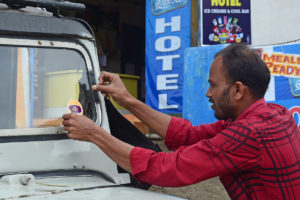By Sandeep Das, EDGE Hero Awardee
After my first glimpse of a bulbous and bizarre looking living fossil in a fish tank, I returned home; little did I realise that this species would become an important fixture in my life for years to come.
I first heard about Nasikabatrachus sahyadrensis at university during a second year lecture on Zoology. Dr. Jain Therattil told us all about a frog named after its pointed nose and the mighty mountains of the Western Ghats, the Purple Frog. I also learnt that the Purple Frog is closely linked with frogs from the Seychelles. The next morning there was a report in the newspaper about a Purple Frog that was found after being washed away by a river; the frog was being looked after in captivity. For a student who was initially more interested in birds than frogs, the little information I heard was enough for me to go and see the Purple Frog back in 2007. Thirteen years on from that day, I am working towards the conservation of this species which I originally went to see all those years ago.

In 2010, Dr. Anil Zachariah introduced me to the wonderful world of frogs. In 2012 Dr Zachariah and I studied the breeding behaviour of the Purple Frog, and since then I have undertaken an annual trip to watch this fantastic species breed at the onset of the monsoon season. In 2016, Benjamin Tapley, Curator of Reptiles and Amphibians at the Zoological Society of London, encouraged me to apply for an EDGE Fellowship to work towards the conservation of the Purple Frog. We developed my EDGE Fellowship proposal during a month-long internship with Ben, part of a Student Conference in Conservation in Science.
My application was successful.
The scope of my work shifted from being solely focused on observing the Purple Frog in the field, to better understand it, then finally to working towards conserving it by bridging research and education. My Fellowship started in 2017 and I worked closely with fellow researchers Rajkumar KP, Nithin Divakar and Benjamin Tapley. My Fellowship started in Madagascar where I attended the EDGE Conservation Tools course which was delivered by a wonderful group of trainers including Olivia C, Ollie W, Rikki G, Cassandra M, Amber D and Claudia G.

As part of the project my team and I started to develop a campaign to popularise the species by comparing it with the mythological King Mahabali who comes above ground only once a year like the Purple Frog. The result was astonishing, more people started to identify with the animal than before. Slowly the frog started to gather attention wherever we spoke about it. Even protected area (PA) managers, who never had any idea about the species, started to identify the species and its tadpoles in their areas. I gave more than 100 talks to diverse audiences including students, PA managers and indigenous people living in Purple Frog habitats. Further to this a survey throughout Kerala was done to map the distribution of the species across the State, we found that many of the areas where they were recorded fell outside of the PA network, and that many sites were bisected by roads which act as a death trap for breeding adults who migrate to seasonal stream sites to breed. As we observed that roads were a great threat to the survival of the species, we developed and delivered awareness campaigns aimed at making drivers aware of the situation and to take necessary precautions to avoid running over this Endangered and endemic amphibian. Recently we submitted a proposal and started a campaign to make the Purple Frog the State frog of Kerala.
Our next steps are to expand the current research and outreach activities to states that neighbour Kerala, as it is possible the species may also be found in these areas.
